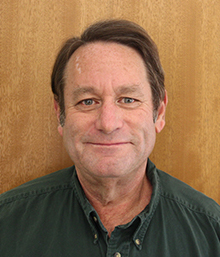We live in a marvelous technological age where pictures are everywhere, still photos or video, coming at us from all directions. I love a good picture.
But I’m having trouble getting comfortable with cameras being everywhere and able to pry ceaselessly into our lives. Cameras are invading the wild places of nature where people go to escape technology. Our law enforcement personnel are being asked to be walking cameras on the street. I suppose it’s in the name of security but I bemoan a loss of trust in our world.
“The whole world is watching,” antiwar protestors chanted at police in front of television cameras during the Democratic National Convention in Chicago in 1968.
I don’t know about the whole world, but I was watching, a curious kid puzzled at such violence that seemed contradictory to the peaceful, rural, Midwestern way of life that I knew. I was too young and detached to fully understand all that was going on, but it’s clear to me now how powerfully the pictures shaped public opinion against the war and against police.
Now the whole world is talking about police wearing body cameras.
Like so much in our world, there are varying opinions and little agreement. One side wants cameras as a prevention or proof of police brutality. There are likely police who welcome cameras as a way to prove what knuckleheads they encounter on some calls.
I suppose there are media broadcasters welcoming even more video to fill the gobs of channels and websites running 24 hours a day. Civil liberty watchdogs fear constitutional privacy may be taking another hit.
I worry about overkill.
Will I (accidentally I hope) run a red light in Parkville and get a ticket and find myself posted for the public to see, or hacked out of the video vaults and posted? Sounds farfetched but is possible. It’s already a bit depressing to see the average police officer weighted down with all manner of guns, radios, bullet-proof vests and bunches of other things. They remind us what random violence is possible despite a world with technological marvels.
Cameras on them remind us that somewhere somebody has time to watch almost anything.
I suppose, though, that you never know when a picture or video captures something historically important or perhaps contributes to justice. Or perhaps it at least begets debate or questions. In Platte City during the Civil War, a photographer snapped a picture of a 16-year-old boy holding a Colt revolver and proudly wearing a southern-leaning bushwhacker’s shirt. Thus did lawlessness and photography meet to enlighten future history buffs. The teenager holding the pistol was Jesse James, who would later be killed in St. Joseph, Mo. shortly before he planned to rob a Platte City bank.
James is long dead, but lore about him and the photograph live on.
Author T.J. Stiles used the Platte City picture of James on the cover of his wonderful biography, “Jesse James, Last Rebel of the Civil War.” It’s also the first photo you see on Stiles’ website about the book. If Jesse was to go riding through the brush on horseback today, his photograph would likely be snapped by a digital game camera. Hunters and wildlife watchers set up digital cameras outdoors to scout for deer or to see what’s in the woods or fields.
In some neighborhoods in autumn, you would be hard pressed to find a woods patch without one. Game cameras have turned up some interesting photos, but now wild places seem a little less free from human intrusion. Serenity seems difficult to achieve if someone is always watching somewhere.
I fully expect every police officer I meet on patrol to be wearing a camera in just a few years, but I doubt I’ll feel any more secure. I doubt honest, hard-working law enforcement officers will feel the public trusts them more.
Freedom someday will mean no cameras.
Bill Graham, who lives in the Platte City area with his family, may be reached by e-mail at editor@plattecountycitizen.com.


